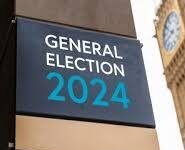
The third week of the British general election campaign has seen all parties, save the Brexit Party, mired in utter confusion. Labour’s policy on Brexit seems to change by the day, reflecting the bitter divisions within Labour itself. Labour and the LibDems have produced ‘costings’ for the manifestos which bear no relation to reality. The Tories took some time to decide what to put in their manifesto, probably because of a row with the Cabinet Office. Sadly, the Tories are going along with the global warming nonsense, taking the line of least resistance. All the parties and the MSM are jumping over Prince Andrew, seemingly unaware that the notorious Virginia Roberts photo is a fake.
The Labour and LibDems have produced fantasy figures which treat tax as linear. According to them both if you raise tax rates by 25%, which is pretty much what Labour want to do with corporation tax, tax income goes up by 25%, as though you can increase taxes without damaging the economy. No.
The inevitable result of the proposed higher taxes would be a reduction in tax income. This is where every Labour government since the war has gone wrong.
Boris Johnson won the televised leaders debate on Tuesday, but not by a convincing margin. He did slightly better in the party leaders’ Question Time on Friday evening, when Jeremy Corbyn faced some pretty hostile questioning. Labour’s radical manifesto does not seem to be convincing voters, nor should it. The numbers don’t add up.
The latest polls suggest that the LibDem and Brexit Party vote is being squeezed and that the Tories are on course to win a majority. However these are national polls. With the exception of Deltapoll, who are fairly new, very few constituency polls are being undertaken. It is therefore difficult to tell how the Brexit Party vote in particular is spread.
Some polls have the Brexit Party polling about the same as the Welsh Nats (Plaid Cymru), in other words around 3-4%. If that vote were concentrated in Leave-voting areas in the Midlands and the North however the Brexit Party could easily win a dozen seats, which together with the DUP might see them holding the balance of power. The Scotch Nats’ national poll numbers aren’t much higher and they’re predicted to win at least 40 seats.
The other problem with the polls is the lack of professionalism and objectivity of the polling organisations. With the possible exception of Rasmussen in the States no polling organisation in the Western world is capable of consistently and accurately predicting votes for conservative parties. Pollsters don’t just fail from time to time – they fail repeatedly. They couldn’t predict Brexit, President Trump’s great victory in 2016 nor the ALP’s defeat in this year’s Australian election.
My rule of thumb is to add at least 2.5% to the vote share of conservative parties or causes. It must always be remembered that a poll is adjusted, not raw, data. They’re like IPCC temperature graphs.

The Tory Manifesto
Although it bears the dead hand of the Cabinet Office, the Tory Manifesto is not quite as dull as I feared. Aside from Brexit (and all the Tories are offering is Boris’s boring deal) there are a couple of interesting items. Making trespass a criminal offense should deal with unauthorised gypsy/traveller encampments.
The commitment to restore the railroad lines closed by Dr ‘von’ Beeching was widely trailed (see last week) but nonetheless welcome. It’s a bit lacking in specifics, though, and only two lines are mentioned: Willenhall, in the West Midlands, and Fleetwood, near Blackpool, closed to passengers in 1966. I assume that the plan is to re-open the line through Willenhall Bilston St, closed to passengers in 1965, not Stafford St, closed in 1931.
Both lines are low-hanging fruit, in the sense that they remained open for freight. What about Abercorn, or Adlestrop, or Bedlinog, or Cheddleton, or the hundreds of other closed stations?
I couldn’t see a mention of fusion research, one of the most important areas of scientific endeavour, a source of deep concern to the DVD, since it promises massive amounts of low-cost, clean energy, or any mention of energy from waste. The manifesto bangs on about climate change, as though cooling the Sun or altering the Earth’s orbit were options.
There’s no policy on social care. I suppose that no policy is better than a bad policy, which is what Theresa May went with in 2017, but I wonder if the Tory high command have quite grasped the concept of a manifesto. It’s where you’re supposed to lay out your policies, not highlight the lack of them. The manifesto also cops out on HS2, the proposed silly high-speed line running from somewhere in West London to somewhere in the Midlands, with proposed extensions to the middle of nowhere.
I’m not surprised that I’ve not had any Tory canvassers knocking at the door. In a time of global cooling it’s not the sort of manifesto that inspires party members to go out into the cold and wet and ask for votes.
I’m less confident this week that Boris will not get a majority, but that’s still my prediction, with the Tories as the largest party.

The Ukrainian nonsense
As the focus turns toward Burisma Holdings and Vice-President Biden’s threat to withhold one billion dollars in aid unless Kiev sacked Prosecutor General Viktor Shokin, I sense that key Democrats are having second thoughts about impeaching the President. Any impeachment would be dead on arrival in the Senate, so why bother?
If the aim was simply to damage the President without removing him it isn’t working. Indeed it’s such an obvious misuse of the impeachment power it’s probably backfiring. As the President says, it’s ‘fake news’.
The State Department and the NSC will need to be given a good smack over this one.
HRH Prince Andrew
The MSM are continuing to miss the point. The late Jeffrey Epstein was a Correa/COREA Group operative and Prince Andrew was targeted in an intelligence operation. Unless you grasp that you can’t understand the story.
The second mistake the MSM are making is to assume that any allegation against Jeffrey Esptein must be true because some of the allegations against him were proven. That is what we lawyers call a non sequitur – it does not follow.
Given the reported size of his onshore estate (the offshore estate has no doubt been insulated against creditors) women and their lawyers have a strong motive for falsifying or exaggerating claims. Whilst not diminishing the crimes which the murdered man admitted in Florida, they were not particularly serious in the great scheme of things, justifying a comparatively light sentence. Nothing else has been proven at all. Virginia Roberts’s testimony was chucked out by a judge in one of the few cases which has come to court. In particular there is no evidence that Epstein physically forced himself on any woman or girl at any time.
The third MSM mistake is to assume that the widely distributed photo purporting to show Prince Andrew with Virginia Roberts and Ghislaine Maxwell is genuine, apparently without any attempt to verify it. My assessment is that the photo is a forgery, that the hand shown on Ms Roberts’s midriff isn’t HRH’s, that the photo of him was taken outside the UK several years earlier, on chemical film, and that it has been digitised and inserted into a genuine digital photo of Ms Roberts and Ms Maxwell. That photo has then been photocopied several times to disguise the insertion. I note the entire absence of any forensic media attempt to refute HRH’s suggestion that the photo is a fake.
The final MSM mistake is to assume, gratuitously and against the evidence, that Jeffrey Epstein committed suicide. He was clearly taken out by his own side to stop him talking.

This week’s reading: Boeing B-17 Flying Fortress: Queen of the Skies, Hachette 2019
Bookazines are an increasingly popular format. As the name implies they are a cross between a book and a magazine. At 159 pages I’ve read shorter books.
Although it’s let down by poor proof-reading, with respect, the researchers have done their homework on the mighty Flying Fortress. Many of the photos will be familiar to aviation historians, but some are new.
I count myself as fairly well-informed on US combat aircraft of World War II, but I’m always willing to learn new facts, indeed that’s why I bought the publication! I hadn’t realised, for example, that the tail turret and waist-gun positions were armored, albeit not extensively. I also hadn’t realised that the famous chin turret on the B-17G had first appeared on the XB-40 gunship.
The XB-40 was heavily armed, but the weight of the ammunition it carried (a .50 cal. round is not exactly light) meant that it couldn’t keep up with the bomber stream once the bombers had shed their payload. Nice idea, shame about the execution!

I was stunned to learn that those nice people the Israelis employed three B-17s in the 1948 war of independence and again in 1956, in fact the B-17 bombed Cairo, and why not. I had no idea that the B-17’s combat career lasted until 1956!
The authors present a balanced view of the strengths and weaknesses of this great aircraft. As more equipment and weight were added its performance fell away. Its bomb bay was small and its payload rather less than that of its near-contemporary, the Consolidated B-24 Liberator. The RAF decided that the B-17 was unsuited to combat operations over Europe, although events proved that judgment rather hasty. The RAF’s Forts lacked the Norden bombsight, which made high-altitude bombing difficult, given that the British Stabilised Automatic Bomb Sight had yet to enter service.
The Fort could both dish out and take tremendous punishment. The deficient forward armament of the E and F models was cured by the chin turret on the G, the firing arcs of which covered most approaches to the aircraft. The Sperry ball turret, fitted from the E model on, wasn’t exactly a spacious working environment, but was the most effective solution for protecting the vulnerable undersides of bombers until the remote installation on the B-29 came along.
Any plane which dropped that amount of bombs on Germany deserves its place in the history books. What the authors do not do is analyse why the Air Corps originally chose the B-18 Bolo, a greatly inferior aircraft, why the B-17 prototype’s controls locked up (we know they locked up and the plane crashed – the question is why they locked up) and why the B-17G wasn’t re-engined with the Wright R-2600. The Fort clearly needed more power by the fall of ’43 and the R-1820-98 just didn’t cut it. Those are questions for intelligence historians however, not aviation historians.

Michael Shrimpton was a barrister from his call to the Bar in London in 1983 until being disbarred in 2019 over a fraudulently obtained conviction. He is a specialist in National Security and Constitutional Law, Strategic Intelligence and Counter-terrorism. He is a former Adjunct Professor of Intelligence Studies at the American Military University.
Read Articles from Michael Shrimpton;
ATTENTION READERS
We See The World From All Sides and Want YOU To Be Fully InformedIn fact, intentional disinformation is a disgraceful scourge in media today. So to assuage any possible errant incorrect information posted herein, we strongly encourage you to seek corroboration from other non-VT sources before forming an educated opinion.
About VT - Policies & Disclosures - Comment Policy



